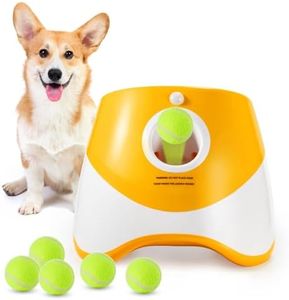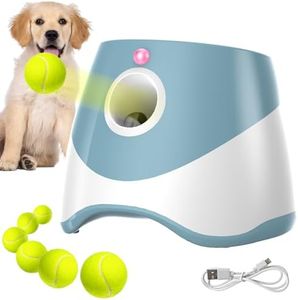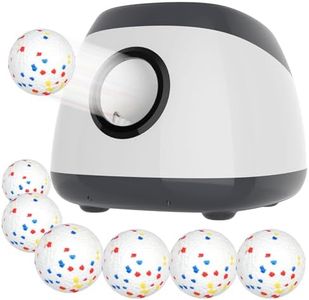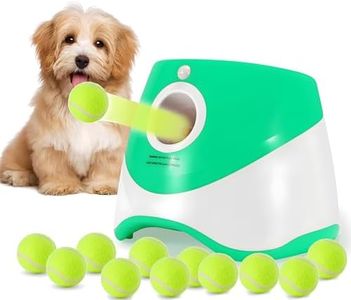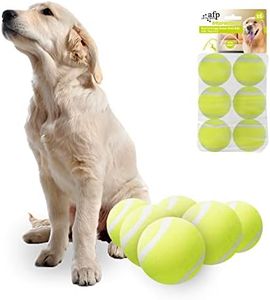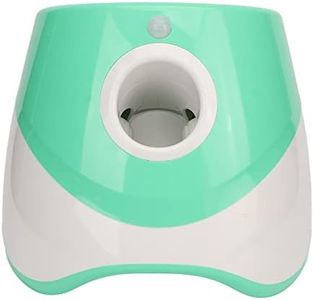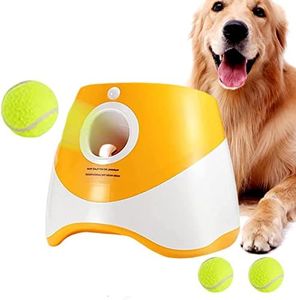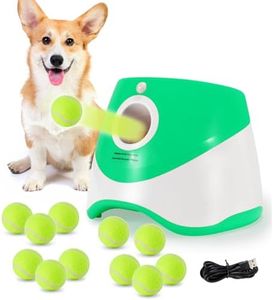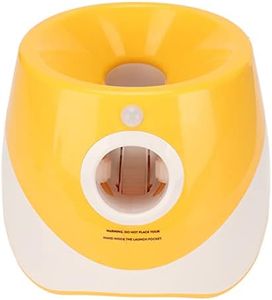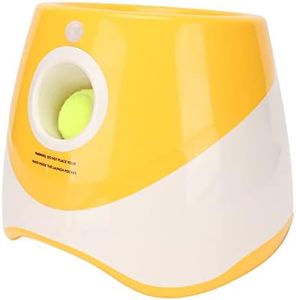We Use CookiesWe use cookies to enhance the security, performance,
functionality and for analytical and promotional activities. By continuing to browse this site you
are agreeing to our privacy policy
10 Best Automatic Dog Ball Launchers
From leading brands and best sellers available on the web.Buying Guide for the Best Automatic Dog Ball Launchers
When choosing an automatic dog ball launcher, you're investing in a fun and interactive way for your dog to play fetch independently. The right launcher can give your dog exercise and stimulation, whether you're at home, working, or away. The best launcher for you and your dog will depend on your dog's size, play style, and the space where you'll use it. Taking time to understand the main features will help you pick a device that keeps your dog safely entertained while making fetch easy for both of you.Ball Size CompatibilityBall size compatibility refers to what size balls the launcher can shoot. This is important because using the wrong size can be unsafe or uncomfortable for your dog. Some launchers work with standard tennis balls, while others are designed for smaller or larger balls. If you have a small dog, you should look for launchers that are compatible with mini balls (usually under 2 inches in diameter), which are easier for little mouths to handle. For medium or large dogs, standard tennis balls (2.5 inches) are usually ideal. Choosing the right size ensures your dog can safely fetch and retrieve the balls.
Launch Distance and SettingsLaunch distance tells you how far the machine can throw the ball, and may offer adjustable settings. This factor is important because it lets you match the throw to your dog's energy and the available play area. Shorter distances (around 10-15 feet) are good for indoor use or small yards. Medium ranges (15-30 feet) work well in larger outdoor spaces and for dogs with moderate energy. Long distances (over 30 feet) are best for very active dogs and big open areas. Choose a launcher with adjustable settings if you want flexibility, especially if your playing spots or dog’s energy levels vary.
Power SourceThe power source indicates how the launcher operates—via batteries, a power cord, or sometimes both. This matters for convenience and flexibility. Battery-powered models are portable and can be used anywhere but may require frequent recharging or replacement batteries. Corded models usually offer consistent performance for long periods but need to be near an outlet, limiting where you can use them. Some launchers offer both options, making them versatile for indoor or outdoor use. Think about where you plan to play most often and choose a power source that matches your lifestyle.
Ball Return MechanismSome launchers feature automatic ball return, where your dog can drop the ball into the machine to relaunch it, encouraging solo play. Others rely on you to reload the balls. If your aim is to keep your dog engaged when you’re busy or away, look for a model designed for self-return and easy loading by your dog, with a simple, wide opening. Dogs new to this may need training, so if you’re prepared to work with your pet, a self-return model can be a big plus. If you only plan to use the launcher when present, a basic model may be all you need.
Safety FeaturesSafety features cover elements beyond just performance, like motion sensors or timed delays that prevent the launcher from firing when a dog (or person) is too close to the front. They help protect your dog’s face and keep fetch safe. Machines with safety sensors and audible alarms are good for dogs who are very enthusiastic or inexperienced. If you'll be supervising, a model with basic safety mechanisms may suffice, but for unsupervised or automatic play, advanced safety features are highly recommended.
Durability and Weather ResistanceDurability refers to how well the machine can handle regular play, dog slobber, and being knocked over. Weather resistance means it can be used outdoors in different conditions. This matters if you plan to use the launcher outside or if your dog is heavy on toys. Sturdy, weather-resistant models made with quality materials are better for rough players or outdoor use, while lighter models may be fine for gentle dogs or indoor-only use. Think about your dog’s habits and your play locations to guide your choice here.
